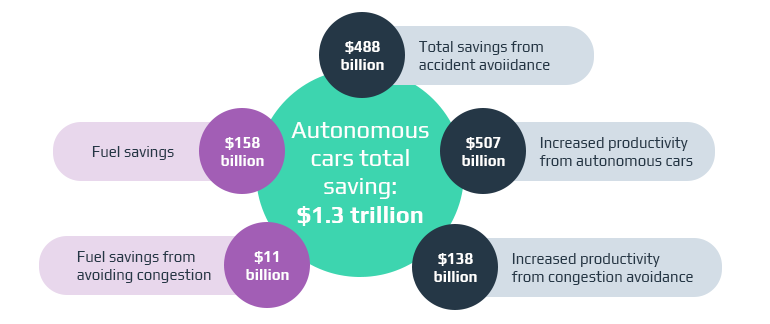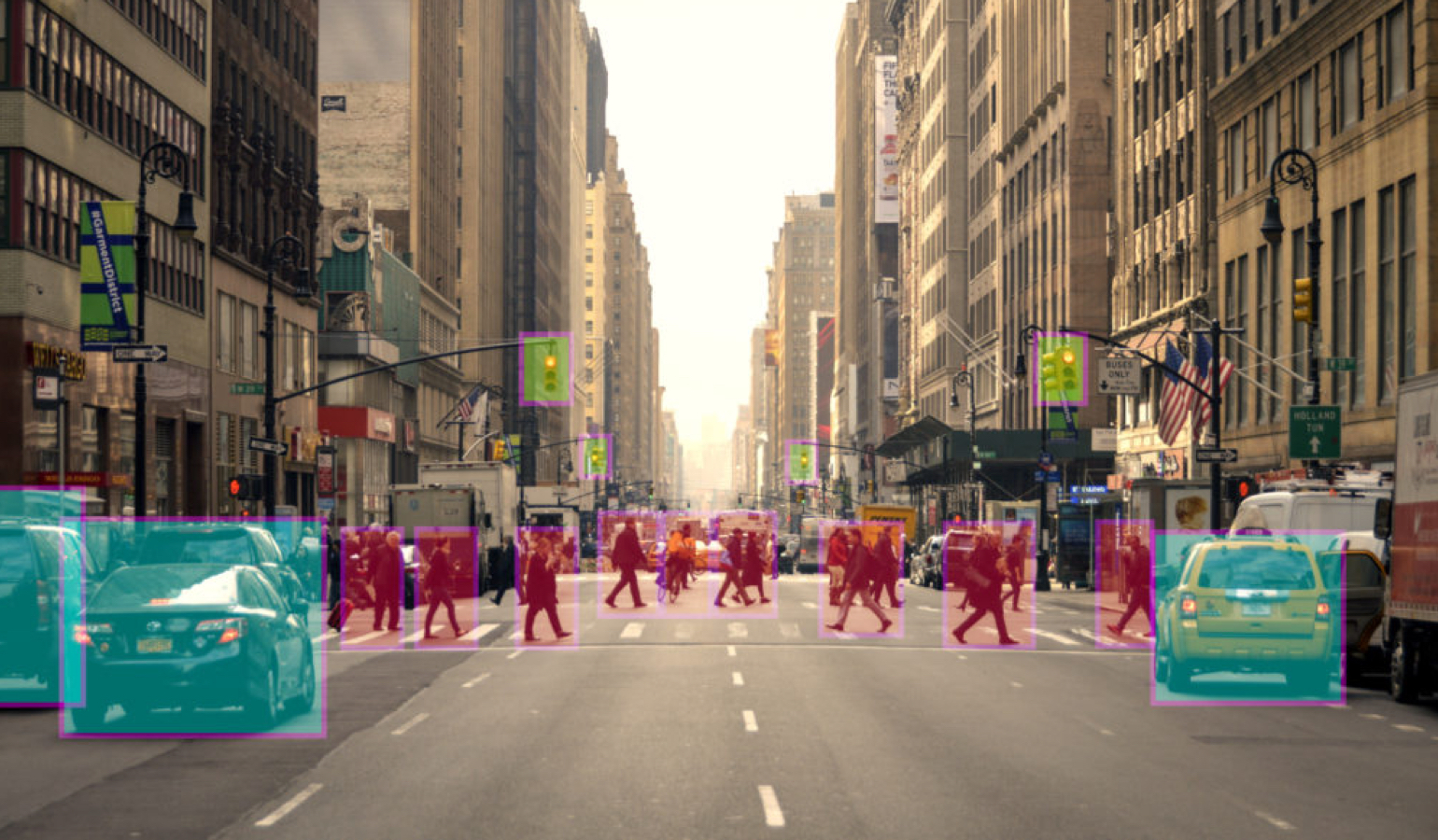It has been almost a century since the automotive industry started experimenting to proclaim an autonomous driving revolution. Decades of research and development gave us a bunch of revolutionary solutions for cruise control, intelligent navigation systems, lane-assist technologies, in-car performance control, wi-fi and gsm connectivity, automatic braking, and self-parking functionality.
The next step is fully autonomous vehicles. Ten to twenty years from now, self-driving cars will be an integral part of urban mobility, decreasing the number of road accidents and bottlenecks while lowering CO2 emissions. Without a doubt, autonomous vehicles are the new technological and automotive revolution. But what will be some of the less conspicuous outcomes of the widespread adoption of the autonomous technology?
Autonomous driving revolution will change the usual structure of the automotive industry

Automation of driving will change infrastructure and legacy vehicles

As with any other big transition, the coming autonomous vehicle revolution won’t happen overnight. It’s going to take years for cars to reach level 3 automation – at which point cars can drive themselves but allow the driver to take control in extreme situations – let alone level 4, at which point the driver is not expected to control the vehicle at all since the car will be able to handle even extreme situations on its own. This means that partially and fully automated cars will be sharing the road with traditional vehicles for a long time. Though we’d like to imagine the streets of the future filled with purely self-driving cars, traditional vehicles won’t be going away anytime soon.
Partially and fully automated cars will be sharing the road with traditional vehicles for a long time.

The issue of integrating self-driving cars into the existing driving infrastructure is tricky. As much as we’d like them to, driverless cars won’t be able to successfully share a lane with human-controlled vehicles – at least for now. New roads and regulations will have to be created to guarantee safe interactions between cars with different degrees of autonomy.
Soon, urban streets will likely have dedicated lanes for driverless cars, just as multi-lane highways do. That way human drivers, cyclists, and pedestrians will know exactly what’s coming at them and what to expect, while driverless lanes will be the stage for testing autonomous cars in urban conditions without stressing out drivers who have their feet on the pedals.
New roads and regulations will have to be created to guarantee safe interactions between cars with different degrees of autonomy. Soon, urban streets will likely have dedicated lanes for driverless cars, just as multi-lane highways do.
Because autonomous cars rely on sensors to “see” their environment and communicate with other cars to get information about road conditions, manufacturers will have to put certain sensors on traditional vehicles as well. This will spread autonomous driving revolution further than just manufacturing of the new autonomous cars but also upgrade already existing models.
What benefits do cities get from autonomous revolution?

Source: BCG – Making Autonomous Vehicles a Reality
Driverless cars will cut fuel waste and emissions

Traffic jams are characteristic of every big city. With thousands of people commuting each day, traffic congestion has become a problem that reaches far beyond rush hour. In addition to stress and time spent on the road, traffic congestion results in wasted fuel and tons of harmful emissions. But these issues are said to be solved by autonomous vehicle revolution.
Once self-driving vehicles hit the streets, we can expect less traffic congestion and greater roadway capacity due to closer distances and smarter traffic flows. Autonomous cars will be able to avoid bottlenecks and choose the best route thanks to vehicle-to-vehicle communication. And not all cars will even have to be autonomous in order to relieve traffic congestion. According to a recent study from the University of Illinois, it only takes a few self-driving cars to ease congestion.
What about cost savings autonomous driving revolution brings to the table?

Research by A. T. Kearney suggests that by avoiding congestion, driverless car technologies can help save $11 billion on fuel and increase productivity by $138 billion annually in the United States alone. Since self-driving vehicles optimize driving and use fuel more efficiently, they reduce the carbon footprint of their owners. Plus, ride- and car-sharing services can further reduce the number of cars, lower emissions, and ease congestion.

The introduction of self-driving cars during the autonomous revolution will not fix traffic problems by itself, but autonomous vehicles can be a powerful tool for optimizing transportation. That’s why the Obama administration proposed spending almost $4 billion over 10 years to encourage the acceptance of driverless cars in the US.
Autonomous cars will rid users of vehicle maintenance

The idea of Transportation-as-a-Service (TaaS) is gaining popularity among other pipelines of the autonomous vehicle revolution as owning and maintaining a personal vehicle becomes more problematic and expensive. A personal vehicle does give you the comfort of going wherever you want. But maintenance costs, fuel costs, lack of parking spots, and pollution also come with the package.
Let’s be honest: if there were a way that you could ride comfortably without the hassle of spending time and money on car maintenance, wouldn’t you go for it? The rise of innovative on-demand car services for ride-sharing and e-hailing has shown that there’s a growing demand for these types of services. Making these services driverless is the next step for the TaaS model.
It may seem that cars are available to everyone nowadays, but the reality is that many people can’t use cars for various reasons. Some people aren’t allowed to drive due to physical or mental issues, some are too young or too old to drive, and of course, some can’t afford a personal vehicle. Shared driverless cars can make rides accessible to everyone because you won’t have to know how to drive or be the owner of a car to use one.
Driverless cars will make roads safer

According to the US Department of Transportation’s National Motor Vehicle Crash Causation Survey, 94 percent of road accidents happen due to human error. While this is sad, the good news is that autonomous vehicles can help reduce this risk. A. T. Kearney projects that traffic accidents will drop by 70 percent after the introduction of self-driving cars.
94 percent of road accidents happen due to human error. While this is sad, the good news is that traffic accidents will drop by 70 percent after the introduction of self-driving cars.
Although people still have a hard time trusting driverless cars, it’s undeniable that autonomous vehicles have plenty of benefits for drivers safety as autonomous cars are:
- never get distracted
- never sleepy
- never bored
- driving under any influence
- making decisions faster than humans
These advantages combined with better adaptability to weather and road conditions, respect for speed limits, and vehicle-to-vehicle communication amount to the safest ride possible.
Autonomous car sharing will redefine urban planning

Car sharing is another domain that will be disrupted by driverless cars. The car rental model is already popular in Europe and North America, where people rent vehicles for short periods of time and avoid the issues that come with owning an automobile. Increasing congestion and the high price of maintaining a car are leading more people toward car sharing in big cities. Driverless car technology may just be the grain of rice that tips the scales and compels the majority of city dwellers to choose car sharing over car ownership.
The Economist claims that one rental car can take the place of 15 owned vehicles. If driverless cars actually cause more people to use car-sharing services, imagine how this will affect urban planning. Fewer cars on the streets would mean more public spaces that would otherwise be occupied by the growing number of parking lots.
Increasing congestion and the high price of maintaining a car are leading more people toward car sharing in big cities as one rental car can take the place of 15 owned vehicles.
Driverless vehicles will be the pinnacle of the automotive revolution, with new technologies and business models erupting to accommodate the autonomous cars industry. Fewer road accidents, more efficient traffic flows, and reduced levels of pollution are only a few of the benefits that connected cars will bring.
Designing and developing driverless cars is a priority for the automotive industry as well as technology industry giants, but no company has the capabilities and resources to create a driverless car on its own. The safer and cleaner future of connected autonomous vehicles can only be achieved through partnerships between automotive OEMs and technology companies. Tier 1 suppliers will not succeed without the help of Tier 2 software providers that help them develop technology solutions for a highly competitive driverless future.
This is no longer a race of companies; it’s a race of partnerships. Automakers, ridesharing companies, and technology companies with the strongest partner networks will most likely lead the race. The most strategic move for Tier 1 companies would be to combine their manufacturing capabilities and skilled engineers with talented software development professionals who have extensive expertise in telematics, autonomous driving, car security, and LBS solutions.
Intellias is ready to become your trusted partner in making your customers’ driving experience smarter, safer, and cleaner with driverless cars. Get in touch to discuss your ideas.


